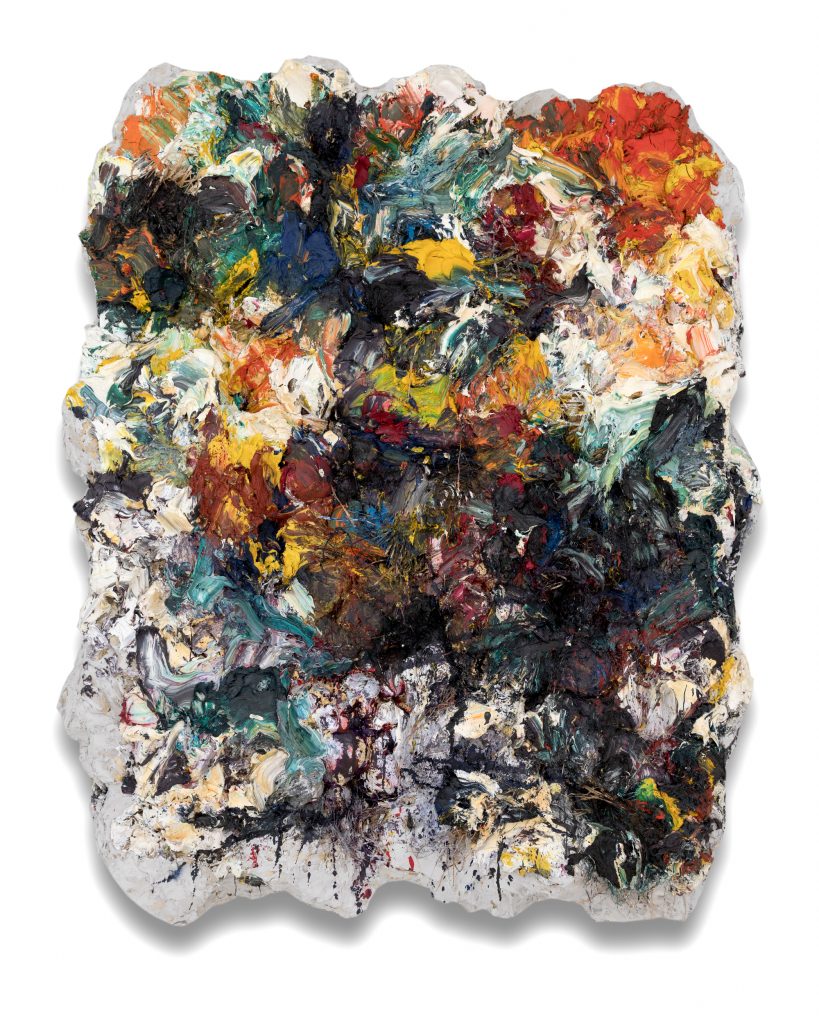19 January–16 March, 2018
Kour Pour and Su Dongping, two solo exhibitions
Hong Kong
Overview
Pearl Lam Galleries is proud to present two solo exhibitions of works by Kour Pour (b. 1987, England) and Su Dongping (b.1958, China) in Hong Kong.
Kour Pour is known for his elaborate carpet paintings that depict familiar symbols of different cultures and universal concepts of beauty. Inspired by an early education in textiles from his Iranian-born father, who owned a carpet shop in the UK, he translates intricate patterns from old carpets onto panelled surfaces.
Pour’s early series of carpet paintings, which take months to prepare, are based on designs the artist has researched from past exhibitions and auction catalogues. Pour is specifically interested in carpets and their role in the world as an object of craft—people weaving in a community, the history, the patterns, the figures, as well as their status as collectable commodities. Each painting is highly labour- intensive and incorporates a range of techniques, including scrupulous hand painting, silkscreen printing, and applying paint layers with a broomstick, sanding down, and repainting. His carpet paintings use the structure and format of Persian miniature paintings, while all the characters and images are pulled from various sources and organized into original compositions. Narratives are created by bringing together images from different cultures and time periods and include themes of migration, race, love, spirituality, war, etc. Pour states his intent:
The carpet designs were influenced by the experiences of trade and exchange with the Europeans, Indians, and Chinese. I was interested in the carpet format as a kind of historical record. I started designing my own compositions with Photoshop, using imagery that I could find on the Internet, and turned the files into silk screens that are used to print the under-painting. I see my own designs as records of the way we collect and exchange information today.
While geometric abstraction endured as a visual and theoretical counterpoint to gestural movements like Abstract Expressionism throughout the 20th century, Pour’s most recent series of paintings uses geometric abstraction to investigate issues of appropriation and originality. The image is silkscreened onto a background and then sections of the image are painted over with geometrical shapes. The end result are paintings that lay somewhere in between a Persian miniature painting and an American or European minimal geometric painting, expressing different cultures and time periods.
Su Dongping was born in Shenyang, China. He taught painting and art history for over 20 years after graduating from Lu Xun Academy of Fine Arts. Su’s works were informed by Taoist philosopher Laozi during his formative years in the aftermath of the Cultural Revolution. His calligrapher father had a great impact on Su’s artistic practice; Su’s father taught him the concept of “bu miao”, meaning not only to depict the shape of characters, but to express the spirit and thoughts on paper spontaneously and decisively. By applying layers with thick paint day after day, Su’s paintings register his life experiences and are infused with a strong sense of recluse. Not wanting to conform to conventional practices, the artist withdrew from traditional education, family, and his social environment, awakening an inner impulse. The artist’s dynamic brushwork, he conveys a longing for freedom. The constant negotiation with uncertainty is what makes abstract painting relevant. Su states:
I must also destroy the thing when my artwork starts to look overly canonical. I warn myself that sometimes becoming a classic means perishing. Then, the work transforms and becomes a new stereotype, so that I must destroy it at once and reconstruct it once again. Thus, my artworks go through many processes of construction and many accidents are incorporated into each round of creation. But you must destroy and rebuild: many things can be discovered throughout these repeated reiterations. On the one hand, an artist must have a memory which is a painting memory. Once it is rooted in your mind, your faculty of judgment improves.
By destroying and reconstructing his paintings, Su discovers his own unique painting technique instead of following traditional painting methods. Through the iterative process of applying layers by laying on oil, plaster, wire nails, and other media, Su breaks through boundaries and rebuilds the discipline of painting to create three-dimensional, sculpture-like paintings. The use of black and dark tone is inspired by the polluted surroundings where he grew up. Due to the rapid urban development and industrialization in China over the last twenty years, old buildings have been replaced by modern skyscrapers, leaving construction residue such as steel bars and concrete around the neighbourhood. Seeing this outside his studio has influenced Su’s choice of media and has inspired him to move forward from the spatial limitations of two-dimensional creations.







